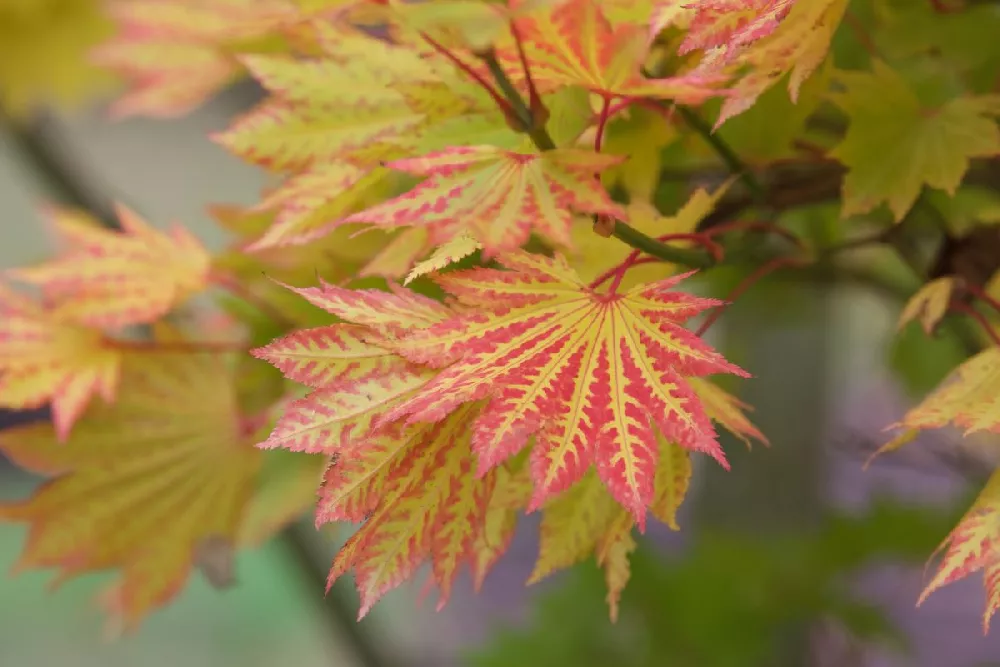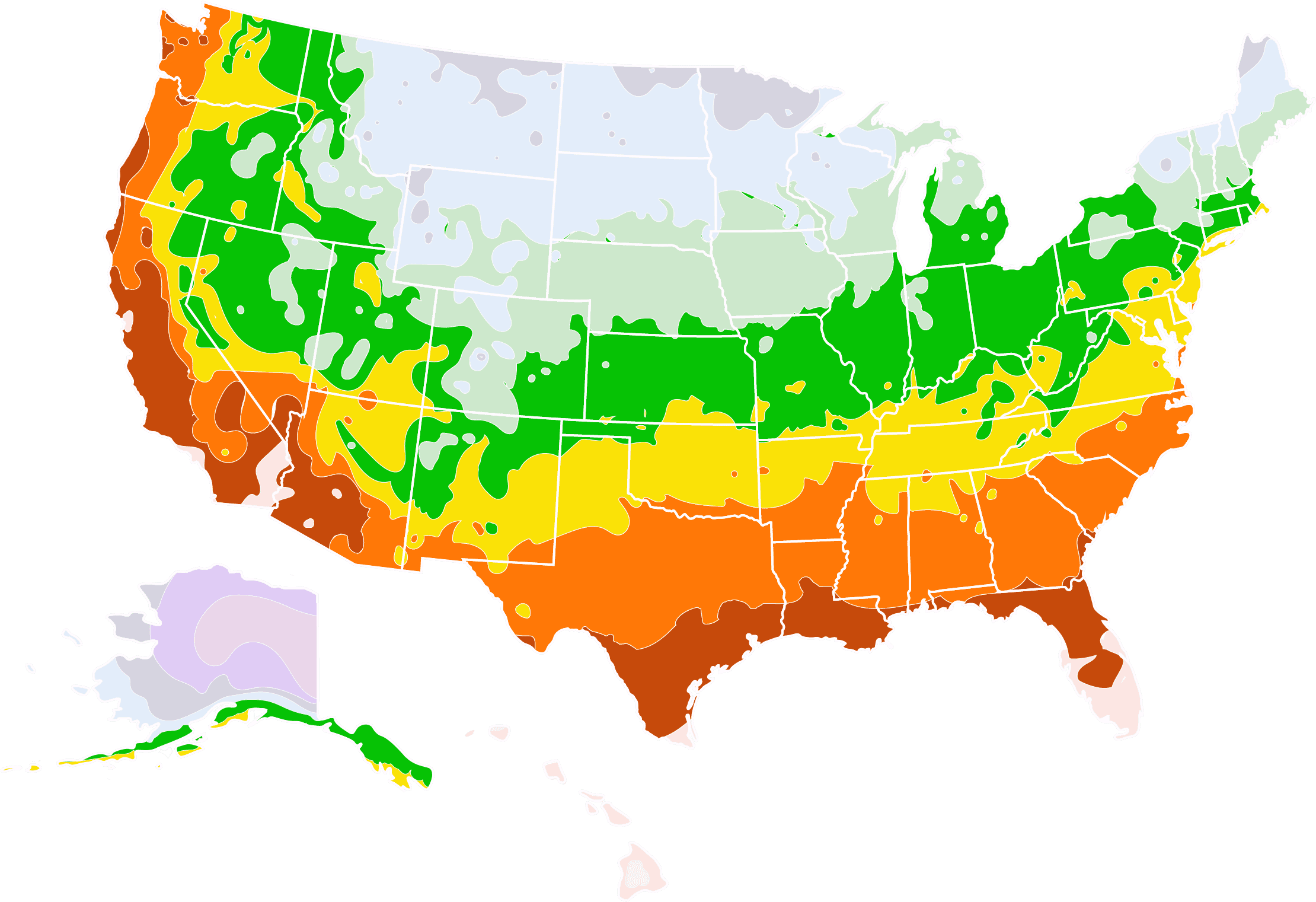- Home >
- Maple Trees >
- Bihou Japanese Maple Tree
Bihou Japanese Maple Tree for Sale - Buying & Growing Guide
The most noteworthy feature of the Bihou Japanese Maple Tree is its surprisingly bright bark, which holds a golden yellow hue all year. That bright shade makes this plant stand out in the landscape, especially during winter, when vibrant color is hard to come by. The Bihou Japanese Maple Tree, or Acer Palmatum 'Bihou,' looks incredible during all other seasons as well. For instance, its foliage turns bright yellow in fall, and its form remains graceful during every season.
- The bark of this tree is yellow, which makes it stand out during all seasons.
- The Bihou Japanese Maple Tree has bright orangish yellow fall foliage.
- This tree is relatively small with an attractive multi-stemmed form.
Enter your zip code to find nearby stores that may carry this plant.
Plant Care
Sunlight

The Bihou Japanese Maple Tree can live in full sunlight but prefers to grow in partial shade.
Watering
This tree will perform best when it receives water about once per week during the hottest and driest parts of summer.
Fertilizing

Apply a low-nitrogen fertilizer once per year during the spring.
Planting and Care
Planting instructions
Although a Bihou Japanese Maple Tree can survive in full sunlight, it will typically look its best when it grows in partial shade, especially in the hotter parts of this plant’s growing range. Your Bihou Japanese Maple Tree will also appreciate soils that have good drainage and a relatively high amount of nutrients. Upon finding a location that meets those needs, plant this tree by digging a hole that is as deep as the root ball is tall and at least twice as wide.
Watering and nutrients
During the first growing season after planting your Bihou Japanese Maple Tree, you should water it often enough to maintain consistent soil moisture. At times, this can mean watering once per week or more. By contrast, an established Bihou Japanese Maple Tree will need water once per week only during the hottest parts of the year. This plant does not need much fertilizer to grow well, but it can benefit from a single annual feeding of low-nitrogen fertilizer during the early spring.
Pollination
The Bihou Japanese Maple Tree blooms during the spring with flowers that hold little to no ornamental value. But while those flowers are not necessarily attractive to humans, they are very capable of attracting flying pollinator insects. Since the Bihou Japanese Maple Tree is a self-fertile plant, pollination occurs easily once those pollinators arrive. Once pollination occurs, your Bihou Japanese Maple Tree will produce a set of winged samaras, which carry this plant’s seeds and will eventually release from the tree and fall to the ground.
Pruning
The ideal time to prune a Bihou Japanese Maple Tree is during the winter while this plant is in its dormant phase. However, the Bihou Japanese Maple Tree does not need much pruning overall. In most cases, all you’ll need to do is remove any branch that is broken, dead or shows signs of disease. When pruning, be sure to use a set of tools that are as sharp and sterile as possible to limit the risk of spreading disease.
Pests, diseases, and animals
Fortunately, the Bihou Japanese Maple Tree has a strong overall resistance to most common plant diseases. However, it remains possible for this plant to experience an infection. Root rot and botrytis are two of the most common diseases to befall this plant, but they are still unlikely. Along with that low risk of disease, there is also a low risk that your Bihou Japanese Maple Tree will experience a pest infestation during its life. If an infestation occurs, it is likely the result of Japanese beetles, weevils or mites.
Achieving maximum results
You should be careful not to over-prune your Bihou Japanese Maple Tree. Pruning too much can cause this plant to respond by producing a lot of fast new growth, which is typically quite weak and prone to breakage. This is especially common when you prune a young tree too much. Also, if you notice that the fall color of your Bihou Japanese Maple Tree is lacking, it may be because it lives in a full sunlight area. Partial shade typically makes for the best color, especially in warmer growing locations.
FAQs
Is the Bihou Japanese Maple Tree a fast-growing tree?
The Bihou Japanese Maple Tree is neither a fast-growing tree nor is it a slow-growing tree. Instead, the Bihou Japanese Maple Tree has a moderate growth rate. In a typical growing season, this plant will add about 6 to 12 inches of new growth. This growth rate results in a mature size of about 10 to 12 feet tall and about six feet wide.
Is the Bihou Japanese Maple Tree a cold hardy plant?
The Bihou Japanese Maple Tree is not the most cold hardy plant around, but it can tolerate some relatively low temperatures. Generally, this plant tends to thrive throughout hardiness zones six through nine. That means that the Bihou Japanese Maple Tree is capable of withstanding temperatures that drop as low as 0 degrees Fahrenheit. As such, many gardeners throughout the lower 48 States have the opportunity to grow this plant outdoors year-round.
Can you plant a Bihou Japanese Maple Tree in a container?
It is most common to grow the Bihou Japanese Maple Tree in the ground. However, the small stature of this plant makes it possible for it to grow in a container as well. If you choose to grow your Bihou Japanese Maple Tree in a container, ensure that you fill the container with healthy soil that has plenty of nutrients and allows for good drainage. The container you use should also allow for good drainage while being wide enough to accommodate this plant's roots.
Compare Similar Products
You can't add more Product Name - Product size to the cart.
OK









